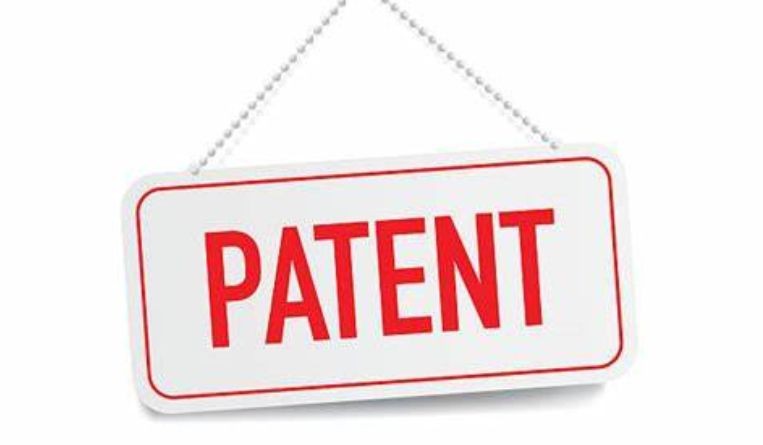Be Aware if you are using ‘about’ in a patent claim!
31 October 2022

Use of the term “about” in a claim is quite common, where the inventor is not sure or unable to pinpoint the exact weight or percentile or volume or thickness, size of particle, etc., of essential elements of the invention to specially address the claim coverage. In such situations, the patent examiner allows claims with insertion of “about” which means in an uncertain degree.
But how the court will interpret such claims is not easy to answer when the difference between the infringing product is a very thin line between “hit” and “miss”.
Use of the preposition “about” in claims is a new style of claim writing adopted by many patent drafters to cover certain inventions in uncertain terms where the degree of the invention matters. When in an infringement suit the court is faced with a dispute relating to claim construction that boils down to the determine the meaning of the term “about”, many means are deployed to find what is the exact or nearest meaning that the invention intends to attribute to measures preceded by the term “about”. For example, in Sabella international Ltd v. Taro Pharma [15-cv-3720 (S.D.N.Y. Sept19,2017)], the sole dispute before Judge William H. Pauley was the claim construction relating to the meaning of the term “about” as it is used in the phrase “about 0.17 wt % trolamine.”
That phrase is found in Claim 17 of the 365 Patent and Claim 21 of the 914 Patent, both of which state the following:
“The gel composition of Claim 1, consisting essentially of 2.0 wt % naftifine hydrochloride, about 20 wt % propylene glycol, about 19 wt % ethanol, about 5 wt % Polysorbate 20, about 1.75 wt % hydroxyethyl cellulose, about 1.0 wt % benzyl alcohol, about 0.17 wt % trolamine
about 0.02 wt % ethylenediaminetetracetic acid or a salt thereof, water, and optionally one or more of a coloring agent and a fragrance.” (emphasis added)
Both Claims 17 and 21 of the patents depend on Claim 1, which describes a gel composition consisting of the following ingredients:
(i) naftifine or a pharmaceutically acceptable salt, present in an amount of from about 0.5 wt % to about 4 wt %;
(ii) a first solvent which is a glycol solvent, present in an amount of from about 10 wt % to about 25 wt %;
(iii) a second solvent which is an alkyl alcohol solvent, present in an amount of from about 10 wt % to about 25 wt %;
(iv) a non-carbomer rheology modifier selected from hydroxyl cellulose, present in an amount of from about 0.75 wt % to about 2.25 wt %;
(v) a polysorbate solubilizing agent present in an amount of from about 3 wt % to about 8 wt %;
(vi) a pH adjuster selected from an amine base; and optionally one or more of: water, a preservative, a chelating agent, a coloring agent, and a fragrance, wherein the gel composition has a pH of about 4.5 to about 6.0. (365 and 914 Patents, Claim 1 (emphasis added).)
Trolamine is a “pH adjuster selected from an amine base.”
The contesting parties gave competing interpretation of the disputed claim. On one hand, Sabella contends that “about 0.17 wt % trolamine” should be construed to mean “approximately 0.17 wt % trolamine,” which includes at least 0.15 wt % trolamine. While Sabella does not believe the term should be defined by a numerical boundary, it proposes a variance of +/- 10% if one is required. On the other hand, Taro construes the disputed claim more narrowly as: “0.17 wt % trolamine wherein the degree of variance is +/- 0.005 wt %.”
Standards of claims interpretation
In this case, the court explored and discussed nearly all the applicable standards of claim interpretation like
-
Claim terms are “generally given their ordinary and customary meaning,” which is the meaning they would have to a person of ordinary skill in the art at the time of invention;
-
The disputed claim must be interpreted in a “manner consistent with the scientific and technical context in which it is used in the patent,” unless the intrinsic record suggests that the inventor used a term with a special meaning;
-
Absent intrinsic evidence to the contrary, imprecise terms are construed to have their ordinary meaning;
-
In addition to the claim and specification, a court may examine the “prosecution history of the patent,” which contains the complete record of all the proceedings before the Patent Office, including any express representations made by the applicant regarding the scope of the claims;
-
In certain cases, inventors’ statements in the specification regarding the meaning of a claim term are also relevant to the interpretation of that term in every claim of the patent absent a clear indication to the contrary; and
-
Finally, courts did not rule out consideration of extrinsic evidence if the intrinsic evidence does not resolve the ambiguity in a disputed claim term.
Construing ‘About’
Coming back to the Sabella case, Pauley framed the question presented as “how a pharmaceutical scientist with experience in topical drug formulation would construe the term ‘about’ in the phrase, ‘about 0.17 wt. % trolamine?’” Relying on the ruling of the Federal Circuit in Central Admixture Pharmacy Serv., Inc. v. Advanced Cardiac Solutions. PC, 482 F.3d 1347, 1355–56 (Fed. Cir. 2007) where it was held that “the term ‘about’ avoids a ‘strict numerical boundary to the specified parameter’ and that its range ‘must be interpreted in its technological and stylistic context’”, Pauley observed that:
“In this case, the patentee deliberately used – and chose not to use – the word ‘about’ to qualify the values of certain ingredients. Claim 17 in the 365 Patent, for example, assigns a strict numerical value to one ingredient—2.0 wt % naftifine hydrochloride – while qualifying the values of all other ingredients with the word ‘about,’ underscoring the patentee’s intent to impart some range in the use of that word. A person of ordinary skill in the art, in reviewing the deliberate use or non-use of the word ‘about,’ would understand that ingredients whose weight percentages are qualified by the word ‘about’ are not defined by a strict numerical limitation.”
Pauly also relied on the Merck case [395 F.3d at 1369] wherein court held that if “the Patents do not expressly define the word ‘about,’ and nothing in the claim or specification suggests that the word should be given anything other than its ordinary meaning of ‘approximately’.”
Curiously, looking into intrinsic evidence, he further observed that:
“Nor is there anything in the intrinsic evidence that reflects the patentee’s intent to redefine ‘about’ differently from its ordinary meaning.” [Elekta Instrument S.A. v. O.U.R. Sci. Int’l, Inc., 214 F.3d 1302, 1307 (Fed. Cir. 2000)].
Pauley, therefore, held that “ absent an express intent to impart a novel meaning, claim terms take on their ordinary meaning, the disputed claim term ‘about 0.17 wt % trolamine’ may be read as ‘approximately 0.17 wt % trolamine. "
Numerical boundaries
Pauley junked numerical boundaries offered by Taro and Sabella, though for different reasons, and held that:
“Thus, this Court gives the word ‘about’ its ordinary meaning of ‘approximately,’ which at least one court has defined as ‘nearly correct or exact,’ or ‘located close together,’ without construing the claim term any further. That definition – consistent with what this Court can glean from the intrinsic evidence – suggests a narrow construction. But while the claim is not as narrow as the construction advanced by Taro, it is certainly not as broad as Sabella’s attempt to include 0.15 wt %.”
“Accordingly, because neither party offers specific evidence from which a numeric range could be inferred, this Court construes the claim term ‘about 0.17 wt % trolamine’ in Claim 17 of the 365 Patent and Claim 21 of the 914 Patent to be ‘approximately 0.17 wt % trolamine.’ (Emphasis added)
Understanding better ‘about’ more
In another recent judgement the Federal Court of Australia revisited the meaning of “about” in Pharmacia LLC v. Juno Pharmaceuticals Pty Ltd [2022] FCAFC 167. In this case, the court inclined to fall back on the “inherently imprecise ordinary English meaning of ‘near; close to’ to the term ‘about’.” The full court upheld that:
“77. The approach taken by the primary judge was to ascribe the ordinary English dictionary meaning to the word ‘about’ as meaning ‘near; close to’. His Honour noted, and this is not challenged, that a construction that gives effect to the ordinary English meaning of the word is to be preferred in circumstances where it is not a term of art.”
This means the court held that near enough is good enough to know the sweep of the term “about” used in any claim. This approach, in fact, matches with the U.S. Sabella ruling where court held that about means “approximately”. However, the latter approach comes with rider that where “the word ‘about’, which the parties accepted is not a term of art, should be given its ordinary English meaning read in the context of the specification as a whole.”
Take away caution
There is no statutory bar on the use of the preposition “about” in a claim. However, the inventor should be extra careful when he intends to put an element of uncertainty in a claim. In India examiners are inclined to raise the objection of indefiniteness of a claim and with trepidation may allow it in a claim if expert evidence favour it. However, the court’s interpretation of use of term “about” may not be as straightforward as the inventor may be intending, as we have seen in Sabella, where the court declined to accept Taro’s proposed variance of +/- 0.005 wt % to broaden the scope of claim narrowly and rejected Sabella’s proposed construction to includes 0.15 wt % in its construction of “about 0.17 wt % trolamine” on the basis that “a composition containing 0.15 wt % trolamine, like 0.17 wt % trolamine as arbitrary. Accordingly, because neither party offers specific evidence from which a numeric range could be inferred, this Court construes the claim term “about 0.17 wt % trolamine” in Claim 17 of the 365 Patent and Claim 21 of the 914 Patent to be “approximately 0.17 wt % trolamine.”
Similarly, the Australian Court upheld the primary judge’s construction of “about” as an ordinary English meaning of “near; close to” rather than as a term of art. The court made it clear further that the term “about” is not so unclear as to be invalidating or perhaps a ground for denying patent. Nevertheless, the latter decision is an acknowledgement of a rift in a claim where clarity is required. These cases raised the level of the uncertainty in a claim where the term “about” is being used. The parties to the dispute in such claim may have a tough call in determining whether they have infringed a claim when falling slightly outside the claimed numerical bounds.
These cases also highlight that claim interpretation is matter of law. The inventor should take extra caution while imputing the use of imprecise and approximating terms such as “about” in a claim. To be more precise, it is a sort of a double-edged weapon for the inventor as any broad construction would lead the examiner to interpret both the claims and the prior art accordingly. Therefore, an approach of the utmost caution is warranted where it is tempting to take advantage of such ambiguous language to broadly capture infringement. Expert advice would be beneficial to draft a claim with precision in order to reduce the risk of denial of a patent.
Finally, giving the ordinary English meaning to the term “about” means that interpretation of this term in the context of patent claim is primarily a matter of law for the court to delve upon, and not necessarily for expert evidence.








